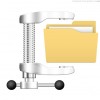Hello wonderful readers! If you’ve been dreaming about skyrocketing your online sales without getting bogged down in coding and technical development, you’ve come to the right place! 😄 Today, we’ll explore the vibrant universe of no-code ecommerce platforms that can truly transform your business aspirations into a profitable reality. Grab a comfy seat, and let’s dive into the world where simplicity meets efficiency!
No-Code Ecommerce — this term is buzzing louder than ever in the digital space. It encapsulates a revolutionary shift in creating online stores. These platforms allow entrepreneurs, creatives, and businesses of all sizes to establish their online presence effortlessly. So, if you’re keen on the idea of maximizing sales with no-code ecommerce solutions, keep reading to unlock the treasure trove of opportunities awaiting you. 🌟
To ensure you’re getting the most relevant and practical advice, I’ve scoured the latest publications and distilled the essence right here. Plus, stay tuned till the end for a unique visual treat tailored for you! 🎨
Understanding the No-Code Revolution in Ecommerce 🚀
As an expert who has navigated the landscapes of software development for years, I’ve witnessed first-hand the transformative power of no-code and low-code platforms. Ecommerce is no exception to this technological renaissance. The no-code movement empowers even the least tech-savvy among us to build and manage online stores with immense ease.
The core appeal of no-code ecommerce solutions lies in their drag-and-drop interfaces, pre-designed templates, and integration capabilities. These features streamline store creation, allowing entrepreneurs to focus on what they do best: selling products and engaging with their customers. If you’re curious about how these platforms can scale your business, check out this insightful article on the rise of no-code solutions.
Among these platforms, some notable names include Shopify, BigCommerce, and Wix. Each offers a robust set of tools to manage products, process payments, and craft customer experiences that resonate with your brand. Want to pick the right tool that aligns with your business vision? I recommend exploring Shopify’s toolkit as a fantastic starting point.
Maximizing Sales with No-Code Ecommerce Strategies 🛍️ 💡
As exciting as it is to launch an online store, the true challenge lies in driving sales and sustaining growth. This is where strategic use of no-code ecommerce platforms shines the brightest. Below, I’ll outline key strategies to help maximize your sales with no-code ecommerce solutions.
Firstly, prioritize the customer journey. Enhance your website’s user experience by utilizing the various customization options available on no-code platforms. Ensure that your site is intuitive, mobile-friendly, and accessible. For instance, Wix templates come with design flexibility that can cater to beautifully crafted user experiences.
Secondly, leverage the power of integrations. Connect your ecommerce store with other marketing tools and analytics to gain insights into customer behavior. Utilize these insights for targeted marketing campaigns, upselling, and cross-selling opportunities. A fantastic resource is the BigCommerce app store, where you can find numerous integrations to expand your store’s capabilities.
Building a Strong Brand with No-Code Ecommerce 🌟
Branding is crucial in the digital market. With no-code ecommerce, you have the freedom to craft a brand that is uniquely yours. No longer are you constrained by the lack of technical skills. Your brand narrative, visual identity, and overall aesthetics can be easily showcased on your online store.
Create compelling content, use high-quality images, and align your message across all platforms. Focus on telling your brand’s story in a way that resonates with your audience. If you’re not sure where to begin, take inspiration from businesses that have flourished by leveraging platforms such as Squarespace’s templates.
A pro tip: consider your brand’s SEO strategy from the start. A no-code ecommerce platform with strong SEO features can put you ahead of the competition by driving organic traffic to your site. For detailed insights into refining your SEO, dive into some invaluable advice from Moz’s Beginner’s Guide to SEO.
Join Our Thriving Community at Gibni.com 💌
If you’re enjoying this deep-dive into maximizing sales with no-code ecommerce solutions, I’ve got some great news! By subscribing to our newsletter at Gibni.com, you’ll join a community passionate about embracing these innovative platforms. Plus, it’s a treasure trove of exclusive tips, industry insights, and subscriber-only perks! 🎉
Don’t miss out on this opportunity to stay ahead of the game. Let us accompany you on your journey to ecommerce success. Simply click on this link, and let’s make the magic happen together!
Thank you for considering joining us – your future self will thank you as you flourish in the ever-evolving world of online sales!
FAQ: Maximizing Sales with No-Code Ecommerce Solutions 🔍
-
What is a No-Code Ecommerce Solution?
-
A no-code ecommerce solution is a platform that allows you to create and manage an online store without coding. It typically features a user-friendly interface with drag-and-drop builders, pre-made templates, and various integrations to streamline the process of selling products online.
-
Can No-Code Platforms Handle High Traffic and Sales Volume?
-
Yes, many no-code platforms are designed to scale with your business. They can handle high traffic and sales volumes, often through tiered plans that provide more resources and features as your store grows. Always check the scalability options with your chosen platform.
-
Is No-Code Ecommerce SEO-Friendly?
-
Many no-code ecommerce solutions come with built-in SEO tools and customization options to help optimize your store for search engines. However, it’s essential to actively manage and update your SEO practices to ensure the best results.
-
How Does No-Code Ecommerce Impact the Customer Experience?
-
No-code ecommerce can significantly enhance the customer experience by enabling you to create a professional, user-friendly website quickly. It allows for easy updates and customization, which means you can continuously improve the shopping experience based on customer feedback.
-
Are No-Code Ecommerce Platforms Secure?
-
Security is a high priority for most no-code ecommerce platforms. They often include SSL certificates, secure payment gateways, and regular updates to protect against online threats. However, it’s crucial to review each platform’s security features and best practices.
Keywords and related intents:
1. Keywords: No-code ecommerce, online sales, platforms, business
Search Intent: Understand what no-code ecommerce is and how it can help increase online sales.
2. Keywords: Drag-and-drop interfaces, ecommerce templates, integration
Search Intent: Find user-friendly no-code ecommerce platforms that offer drag-and-drop interfaces.
3. Keywords: Shopify toolkit, online store tools
Search Intent: Explore the Shopify toolkit and its tools for managing an online store.
4. Keywords: No-code ecommerce strategies, driving sales, maximizing sales
Search Intent: Learn effective strategies for maximizing sales using no-code ecommerce platforms.
5. Keywords: User experience, Wix templates, mobile-friendly websites
Search Intent: Discover how to enhance the user experience with Wix templates for no-code websites.
6. Keywords: BigCommerce app store, marketing integrations, analytics
Search Intent: Identify integrations from the BigCommerce app store that can help market and analyze ecommerce performance.
7. Keywords: Ecommerce brand-building, Squarespace templates, visual identity
Search Intent: Get insights on building a strong brand identity with Squarespace’s ecommerce templates.
8. Keywords: SEO strategy, no-code platforms, organic traffic
Search Intent: Research the best SEO practices for no-code ecommerce platforms to increase organic site traffic.
9. Keywords: Gibni.com, ecommerce solutions, community, newsletter
Search Intent: Join the Gibni.com community and sign up for their newsletter on no-code ecommerce solutions.
10. Keywords: No-code ecommerce FAQ, scalability, SEO-friendly, customer experience
Search Intent: Find answers about scalability, SEO benefits, and customer experience on no-code ecommerce platforms.
#no-code ecommerce
#Maximizing #Sales #NoCode #Ecommerce #Solutions



 Faster and optimized eCommerce websites do sell +40% more than slower ones, just because they are faster. You “will” agree once you see the money come ;) trust me.
Faster and optimized eCommerce websites do sell +40% more than slower ones, just because they are faster. You “will” agree once you see the money come ;) trust me.
 If you don’t know it already, CS-Cart runs Smarty for its template engine. Smarty is basically great from an ease of use point of view, but unfortunately, Smarty v2 is not optimized for speed. Well, Smarty did great on its Smarty v3 on speed optimization, and included multiple cache handlers like eAccelerator, APC and others.
If you don’t know it already, CS-Cart runs Smarty for its template engine. Smarty is basically great from an ease of use point of view, but unfortunately, Smarty v2 is not optimized for speed. Well, Smarty did great on its Smarty v3 on speed optimization, and included multiple cache handlers like eAccelerator, APC and others. I have to mention that APC caching improves A LOT your site performance, but, Smarty v2 does not contain an APC cache handler, so I made an APC cache handler for Smarty v2, and thus for CS-Cart 3, which makes your content load directly from “RAM” instead of Hard Drive. This means “very fast”.
I have to mention that APC caching improves A LOT your site performance, but, Smarty v2 does not contain an APC cache handler, so I made an APC cache handler for Smarty v2, and thus for CS-Cart 3, which makes your content load directly from “RAM” instead of Hard Drive. This means “very fast”.



